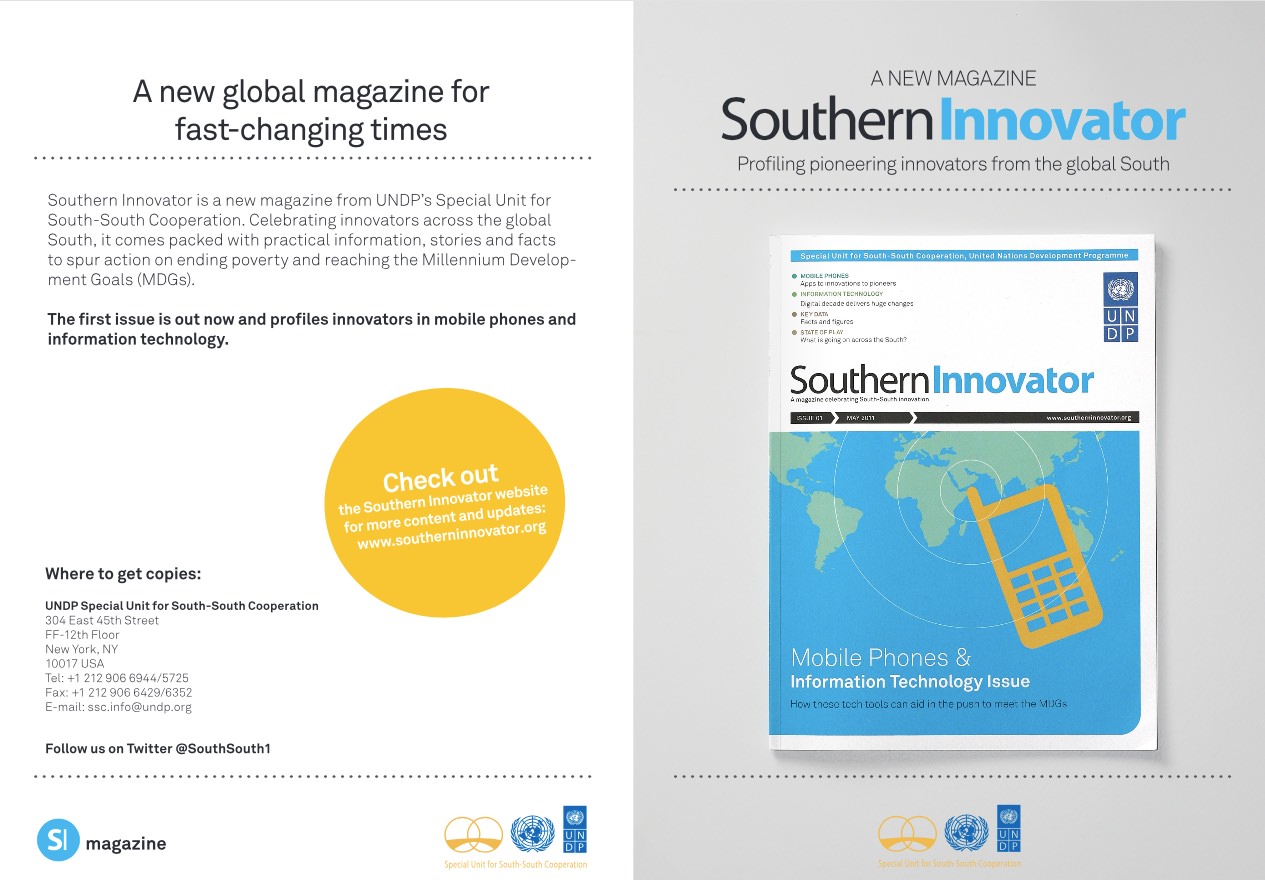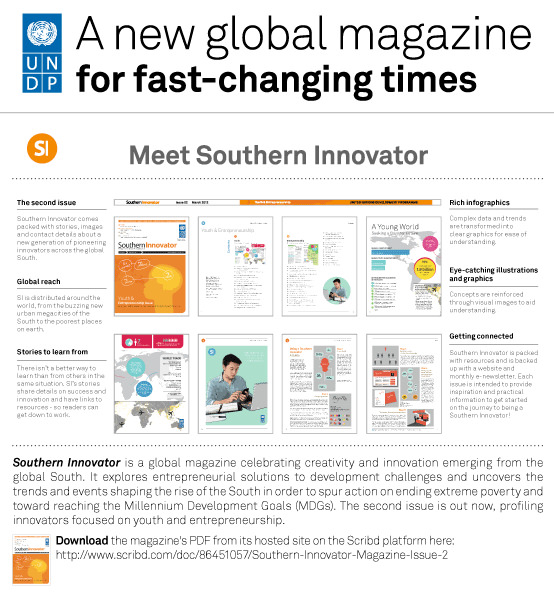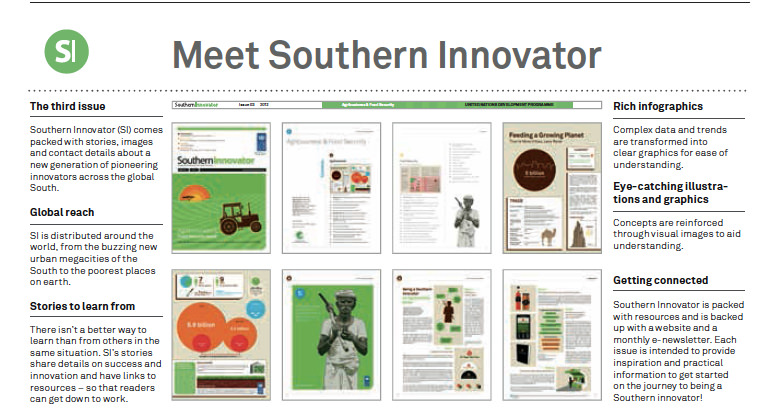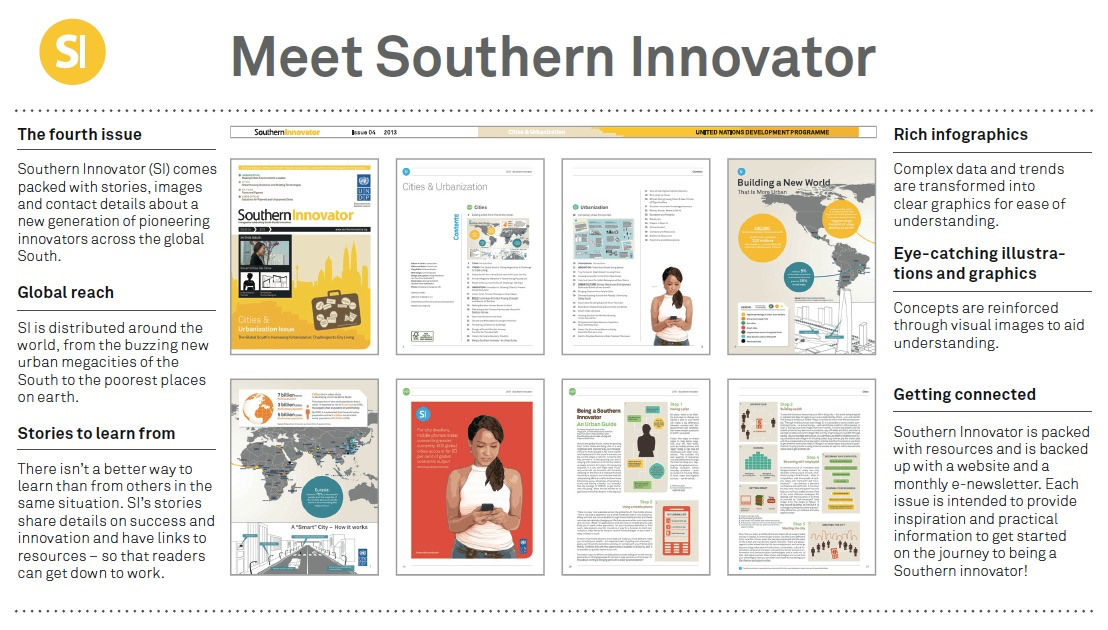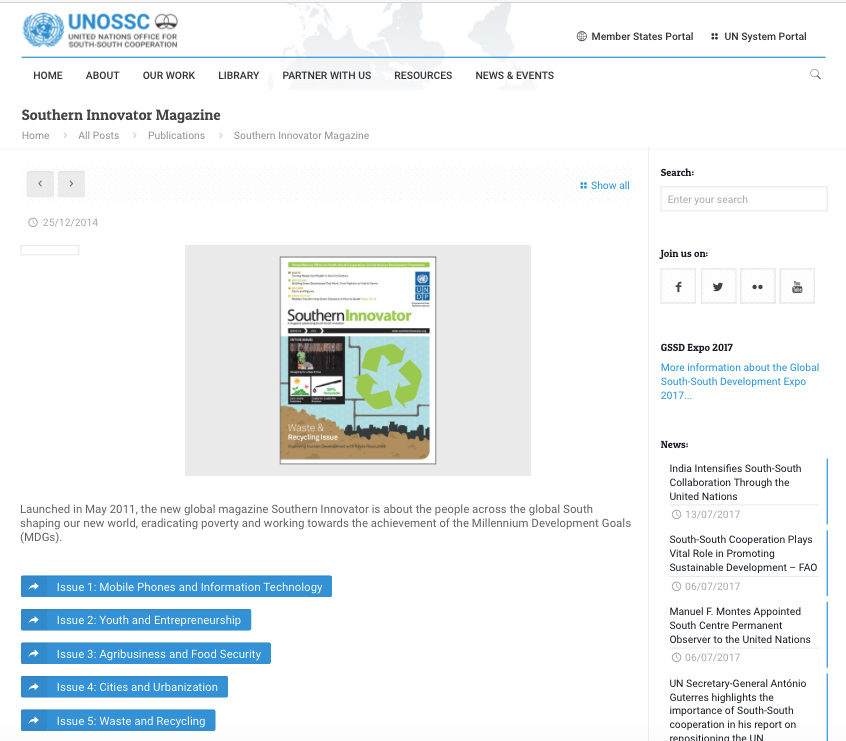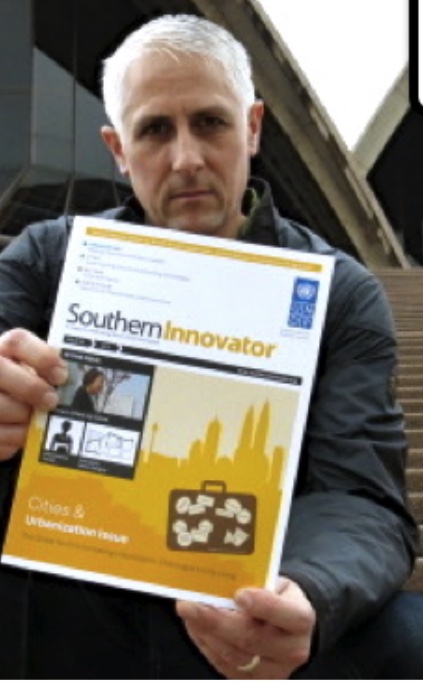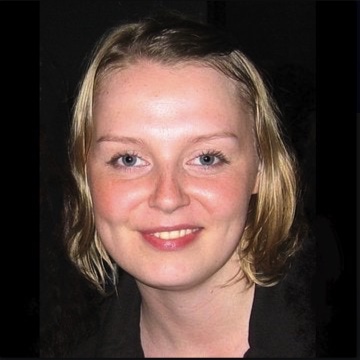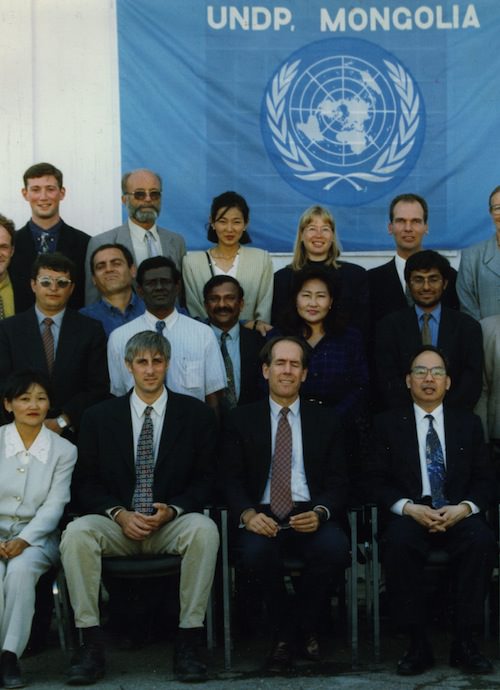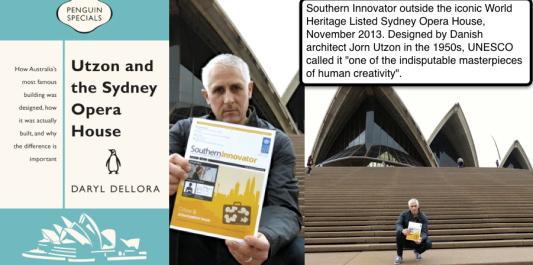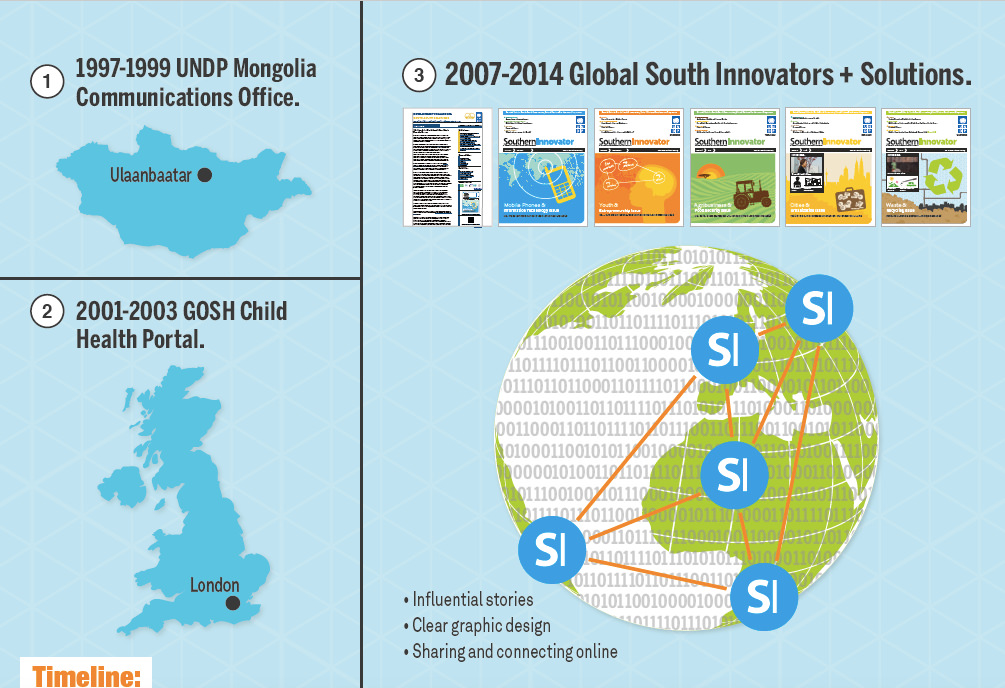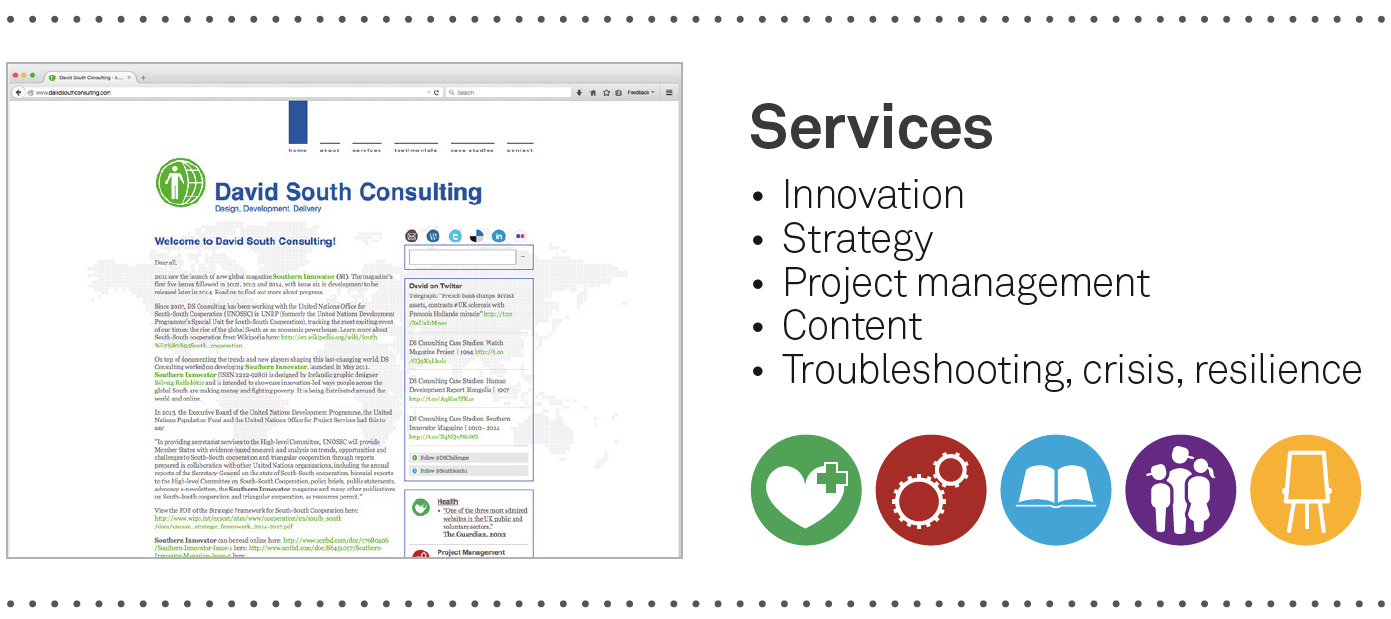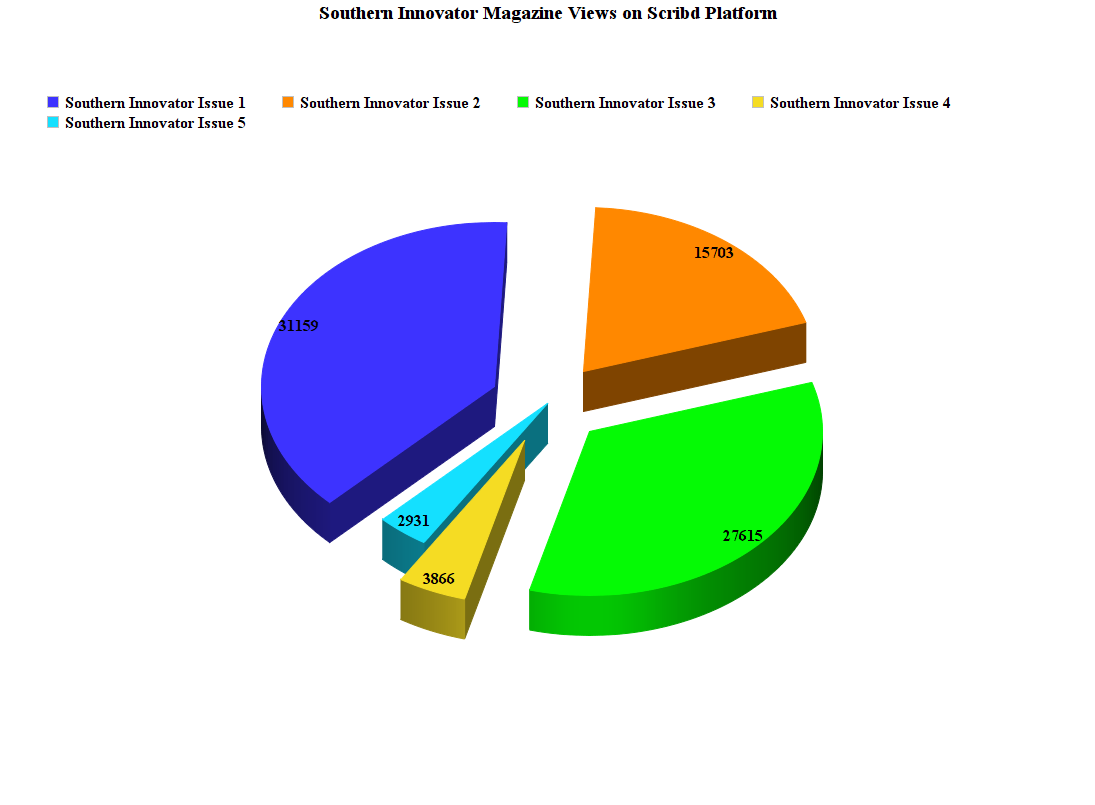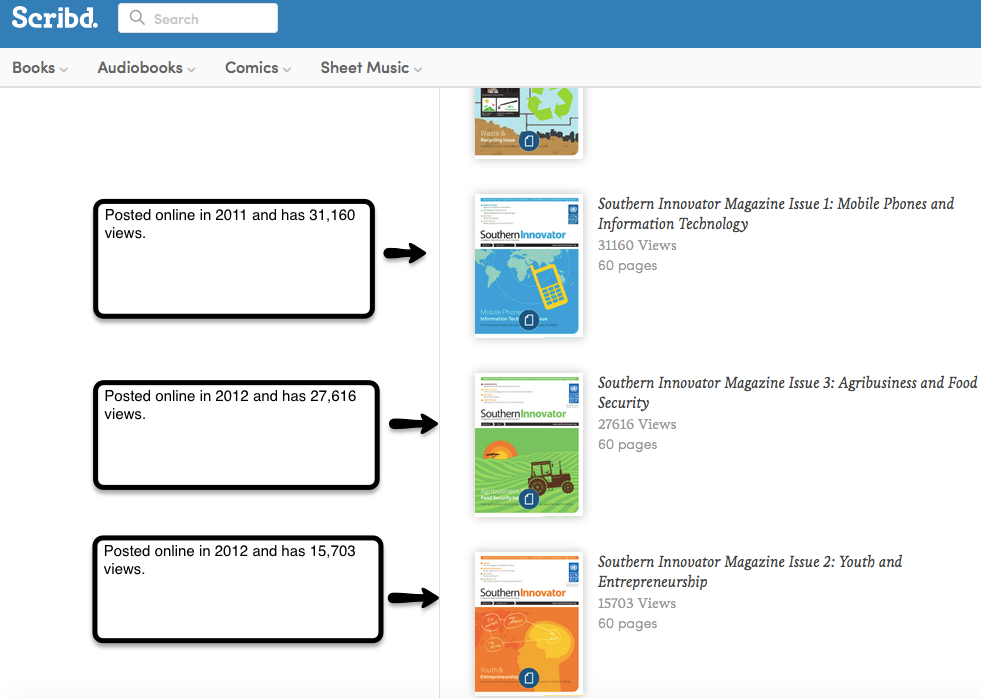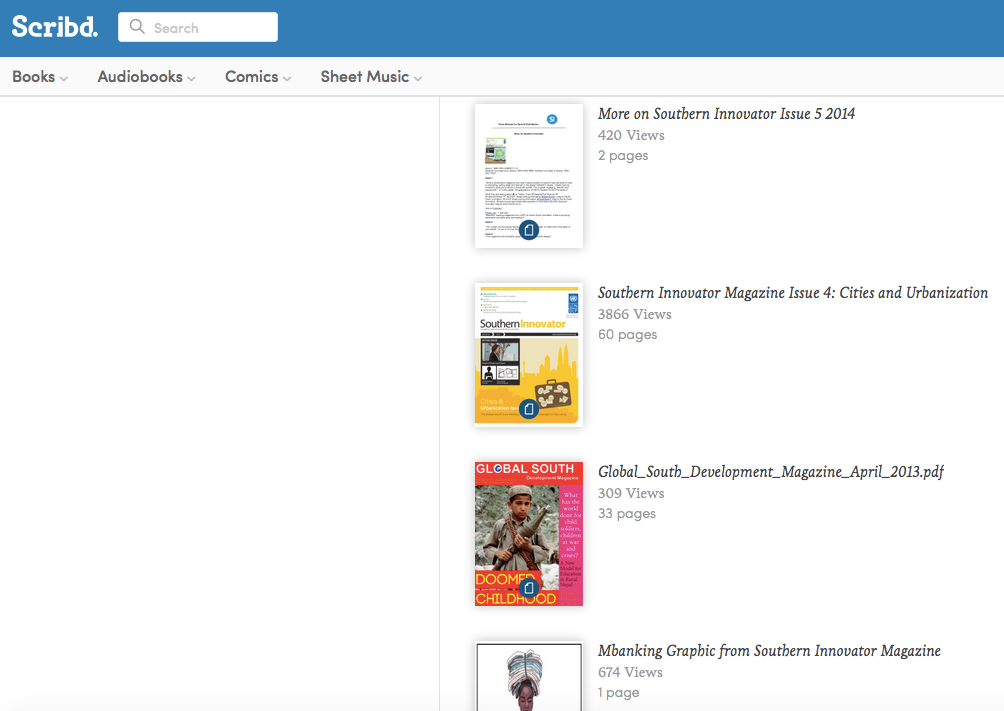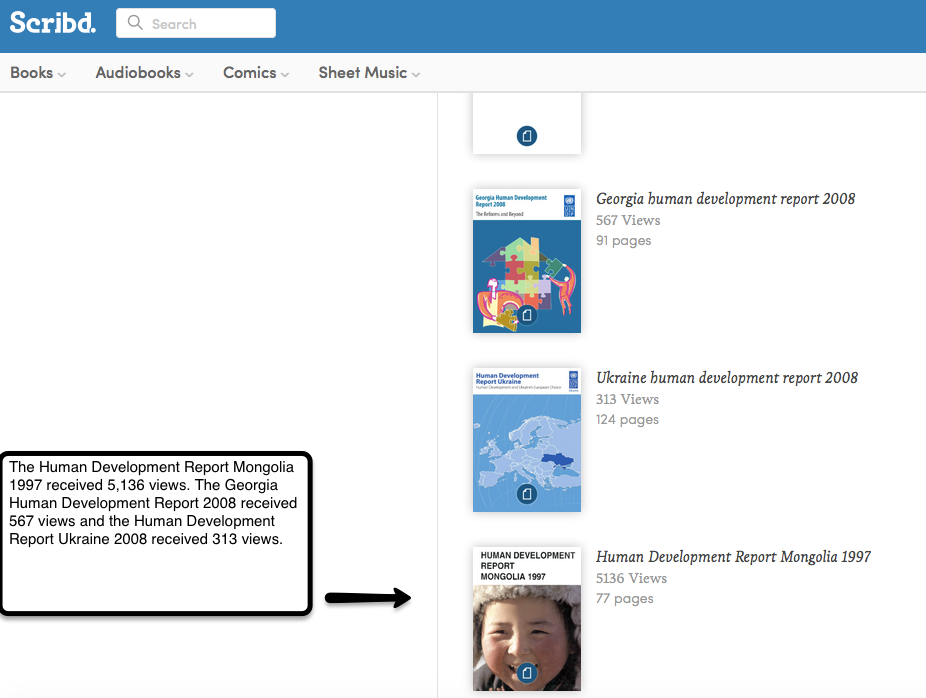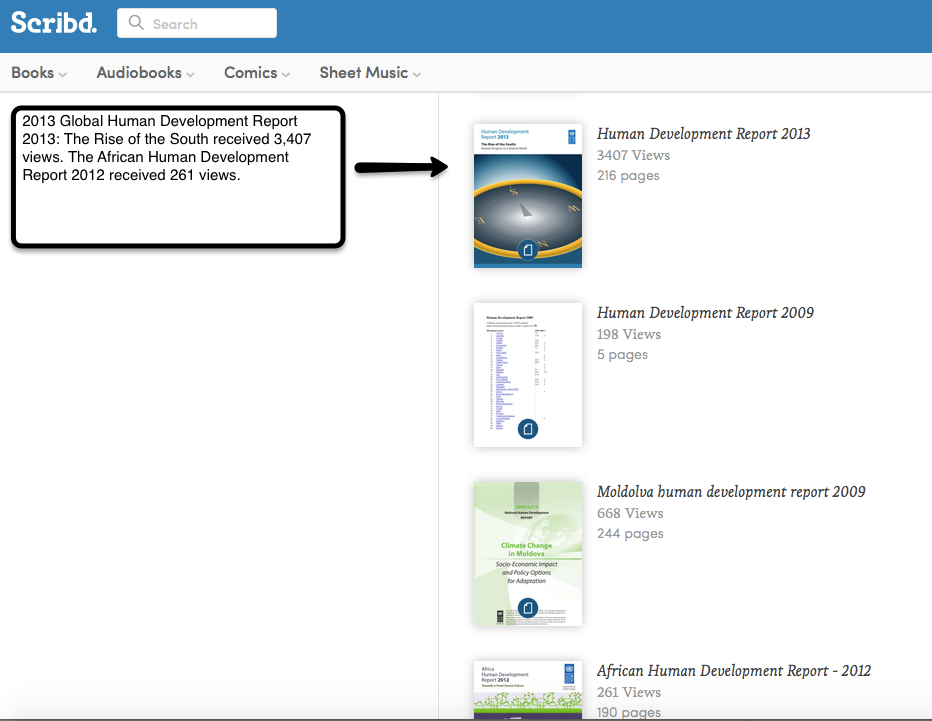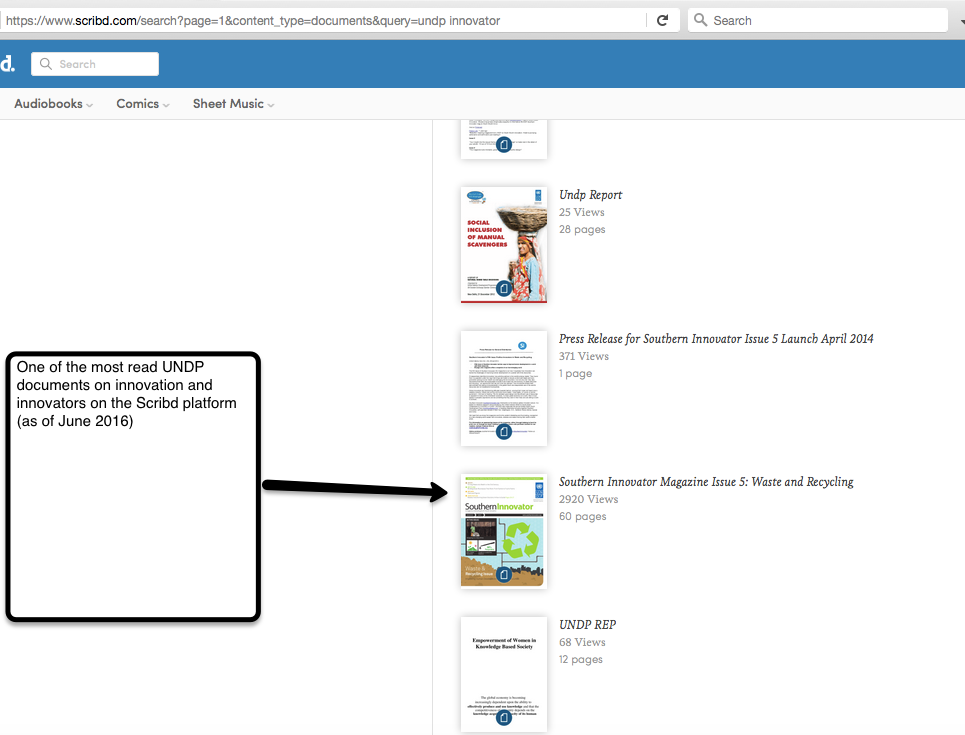Innovation Agenda and Timeline | 2007 - 2015
 Monday, October 2, 2017 at 10:30AM
Monday, October 2, 2017 at 10:30AM


2007: David South Consulting retained to research and write the United Nations e-newsletter Development Challenges, South-South Solutions for the then-Special Unit for South-South Cooperation (now the UN Office for South-South Cooperation).
We were able to identify numerous trends that were at the time being overlooked or under-reported; trends that could radically re-shape international development. This included the rapid rise of mobile phones in the global South and their powerful impact on economic development, the rush to cities and urban areas that was turning the world into a majority urban place, and the shift to greater South-South trade, investment and contact. Whereas the past involved people always looking North for inspiration, capital and business and trade relationships, this was shifting to South-South arrangements. And there were plenty of inspirational, modern, 21st century examples of economic, social and human development achievements across the global South to report on. By consistently tracking and chronicling a quiet revolution underway in the global South, the e-newsletter was able to draw attention to a rising 21st-century global innovator culture being shaped by the use of mobile phones and information technologies. Few at the time had grasped how much this was going to reshape the international development paradigm.
To start, the e-newsletter Development Challenges, South-South Solutions (begun in 2006), was used to gather together as many stories, data, trends, and contacts as possible and get this message to as wide a group as possible. Luckily, this coincided with the very moment whole swathes of the global South were coming online, either through connecting with mobile phones or through the Internet. Quickly, it became clear there was not a lack of inspiring stories and innovations and solutions to share, but a lack of resources to communicate them. One solution was to utilise a new publishing tool that emerged in 2007: crowd-powered news services. It became a great way to bypass the stranglehold on news and information held by traditional media. Read more on this here: http://www.scribd.com/doc/251968773/Southern-Innovator-Summary-of-Impact-2011-to-2012
In particular, the e-newsletter caught the eye of those looking for inspiration in the wake of the 2007/2008 global economic crisis:
“Great economic and business reporting! Very helpful for us.” Africa Renewal, Africa Section, Strategic Communications Division, United Nations Department of Public Information
“I just went over your June newsletter. It’s very well done and far reaching. Congratulations!” Violette Ruppanner, Director, 3D -> Trade – Human Rights – Equitable Economy, Geneva, Switzerland
“Just to let you know I enjoyed the newsletter a lot – it was interesting to learn about things going on that I would never otherwise find out about, and also the listing of future conferences and events proved very useful.” Ian Sanderson, Deloitte, Geneva, Switzerland
“Congratulations on another great newsletter that’s packed with fascinating information! I really enjoy getting it each month.” Whitney Harrelson, Making Cents, Washington D.C.
Stories we published that year include:
Computing in Africa is Set to Get a Big Boost
Trade to Benefit the Poor Up in 2006 and to Grow in 2007
Social Networking Websites: A Way Out of Poverty
Innovation from the Global South
Creative Use of Wi-Fi to Reach the Poor
Web 2.0 to the Rescue! Using Web and Text to Beat Shortages in Africa
A New House Kit for Slum Dwellers that is Safe and Easy to Build
Afro Coffee: Blending Good Design and Coffee
2008: Development work begins on the concept for a book on innovation in the global South. Attend an Africa trade-focused meeting in Switzerland just as the global crisis breaks. Witness attendees dash from the event as they get frantic calls from London and New York. Undertake Cuba study tour with the BSHF.
Stories we published that year include:
Cyber Cities in the South: An Oasis of Opportunity
Decent and Affordable Housing for the Poor
Nollywood: Booming Nigerian Film Industry
Illiterate Get Internet at the Touch of a Button
Insects Can Help in a Food Crisis
New Weapon Against Crime in the South
Urban Farming to Tackle Global Food Crisis
Urban Youth: A Great Source of Untapped Growth
2009: The book concept becomes a magazine. Attend the UN Conference on the Social and Political Dimensions of the Global Crisis: Implications for Developing Countries in Geneva, Switzerland.
Stories we published that year include:
Rickshaw Drivers Prosper with New Services
Cuba’s Hurricane Recovery Solution
Rebuilding After Chinese Earthquake: Beautiful Bamboo Homes
Crowdsourcing Mobile Phones to Make the Poor Money
African Ingenuity Attracting Interest
Making the World a Better Place for Southern Projects
Growing a Southern Brand to Global Success: The Olam Story
2010: Begin working with graphic designer and illustrator Solveig Rolfsdottir and graphic designer Eva Hronn Gudnadottir in Reykjavik, Iceland on the initial concepts for what would become Southern Innovator. The working title for the new magazine is Creative Sparks.
Stories we published that year include:
Shoes with Sole: Ethiopian Web Success Story
Housing Solution for World’s Growing Urban Population
Indonesian Middle Class Recycle Wealth Back into Domestic Economy
Crowdfunding Technology Start-up Success in Africa
Mongolia Looks to Become Asian IT Leader
Innovation in Growing Cities to Prevent Social Exclusion
Maker Faire and the R&D Rise in the South
Food Diplomacy Next Front for South’s Nations
2011: In 2011, a new magazine, Southern Innovator was launched at the Global South-South Development Expo (GSSD Expo) in Rome, Italy, using the insights gleaned from the e-newsletter. The first issue on mobile phones and information technology was called “a terrific tour de force of what is interesting, cutting edge and relevant in the global mobile/ICT space…”. A further four issues were published on different themes (and launched at global expos around the world), culminating in the United Nations Development Programme (UNDP) adopting innovation and South-South cooperation as its guiding approach in its new strategic plan for 2014 to 2017 (http://ssc.undp.org/content/dam/ssc/documents/Key%20Policy%20Documents/N1362177.pdf) (UNDP’s second ever). Southern Innovator was cited as one of the reasons for this. Issue 2 of Southern Innovator, on the theme of youth and entrepreneurship, was also cited as a resource in the first-ever UNDP Youth Strategy 2014-2017 (http://www.pnud.org.br/arquivos/Youth%20Strategy%202014-2017.pdf) (http://www.youthpolicy.org/library/wp-content/uploads/library/2014_UNDP_Youth_Strategy_Eng.pdf).
Stories we published that year include:
Food Inflation: Ways to Fight It
Disaster Recovery, Ten Years After: The Gujarat, India Experience
Cambodian Bloggers Champion New, Open Ways
Indian ID Project is Foundation for Future Economic Progress
African Youth Want to do Business in Fast-growing Economy
Anti-bribery Website in India Inspires Others
Data Surge across Global South Promises to Re-shape the Internet
Filipino Architect wants to Transform Slum with New Plan
2012: Two issues of Southern Innovator are launched this year: Youth and Entrepreneurship and Agribusiness and Food Security. They are launched at the Global South-South Development Expo (GSSD Expo) in Vienna, Austria.
Stories we published that year include:
Microwork Pioneer Transforms Prospects for Poor, Vulnerable
Venture Capital Surge in Africa to Help Businesses
Africa’s Tourism Sector Can Learn from Asian Experience
Designed in China to Rival ‘Made in China’
China Looking to Lead on Robot Innovation
Kenya Turns to Geothermal Energy for Electricity and Growth
Global South’s Rising Economies Gain Investor Spotlight
Cooking Bag Helps Poor Households Save Time, Money
2013: In 2013, the global Human Development Report took on the theme “The Rise of the South”: a theme first mooted as a potential cover story for Southern Innovator’s launch issue while in development in 2010 (http://www.davidsouthconsulting.com/blog/2015/7/27/you-heard-it-here-first-influencing-perspectives-on-the-glob.html).
The Cities and Urbanization issue is launched at the Global South-South Development Expo (GSSD Expo) in Nairobi, Kenya.
Stories we published that year include:
Global South Experiencing Transportation Revolution
Global South’s Middle Class is Increasing Prosperity
African Digital Laser Breakthrough Promises Future Innovation
Boosting Tourism in India with Surfing Culture
US $1 Trillion Opportunity for Africa's Agribusinesses Says Report
Time-Tested Iranian Solutions to Cool and Refrigerate
Small Fish Farming Opportunity Can Wipe Out Malnutrition
Vietnamese Google Rival Challenging Global Giant
2014: The fifth issue of Southern Innovator is launched at the Global South-South Development Expo (GSSD Expo) in Washington, D.C.. Southern Innovator has always tried to inspire others to take action and this has turned out to be the case.
"Beautiful, inspiring magazine from UNDP on South-South innovation. Heart is pumping adrenaline and admiration just reading it”
Once blazing a lonely trail, there are now many places to find stories on global South innovation (The Guardian, SciDev, Devex, Business Fights Poverty, Zunia etc.). Mainstream media have also woken up to the energy and change sweeping across the global South, disrupting its regular diet of negative news stories focused around war, disasters and failure (unfortunately, still the majority of what most people see on their TV).
"I liked your latest Southern innovator! Always inspiring.”
"Btw, I really enjoyed reading them, impressive work & a great resource. Looking forward to Issue 6. My best wishes to you & your team at SI.”
"The magazine looks fantastic, great content and a beautiful design!"
Most importantly, it is the young who have told us they ‘get’ Southern Innovator. It portrays a world they know - comfortable with new technologies, looking to solve problems, open to doing things in new ways. And it is that audience that excites us the most: the youth of the global South (Africa’s young population will be a huge contributor to the world's working-age workforce by 2050): they are shaping the new world we live in and seeking a role in it.
On Twitter, comments included: From @CapacityPlus Nice job RT @ActevisCGroup: RT @UNDP: Great looking informative @SouthSouth1 mag on South-South Innovation; @UNDP Great looking informative @SouthSouth1 mag on South-South Innovation; @JeannineLemaire Graphically beautiful & informative @UNDP Southern Innovator mag on South-South Innov.
The phases of this project have been compiled in two e-books and published online here:
Phase 3: Scale-up Southern Innovator by seeking funding and support.
Stories we published that year include:
Women Empowered by Fair Trade Manufacturer
Global South Trade Boosted with Increasing China-Africa Trade in 2013
India 2.0: Can the Country Make the Move to the Next Level?
“Pocket-Friendly” Solution to Help Farmers Go Organic
The BRCK: Kenyan-Developed Solution to Boost Internet Access
3D Printing Gives Boy a New Arm in Sudan
China’s Outsourced Airliner Development Model
Big Data Can Transform the Global South’s Growing Cities
2015: In September 2015 (http://www.bbc.co.uk/news/world-asia-china-34372188), China's President Xi Jinping announced China would spend US $2 billion on South-South cooperation initiatives. This has been called “a ‘game changer’ in international relations” (http://www.ipsnews.net/2015/11/opinion-chinas-new-south-south-funds-a-global-game-changer/). President Xi also said of South-South cooperation, it is: “a great pioneering measure uniting the developing nations together for self-improvement, is featured by equality, mutual trust, mutual benefit, win-win result, solidarity and mutual assistance and can help developing nations pave a new path for development and prosperity.”
![]()
© David South Consulting 2017
 David South | Comments Off |
David South | Comments Off |  GSSD Expo,
GSSD Expo,  MDGs,
MDGs,  SDGs,
SDGs,  South-South Cooperation,
South-South Cooperation,  Strategies,
Strategies,  UN,
UN,  UNDP,
UNDP,  UNOSSC,
UNOSSC,  United Nations,
United Nations,  david south consulting,
david south consulting,  innovation,
innovation,  innovator in
innovator in  David South Consulting,
David South Consulting,  GSSD,
GSSD,  GSSD Expo,
GSSD Expo,  Health and Human Development,
Health and Human Development,  International Development,
International Development,  Millennium Development Goals,
Millennium Development Goals,  Southern Innovator,
Southern Innovator,  Sustainable Development Goals
Sustainable Development Goals 
